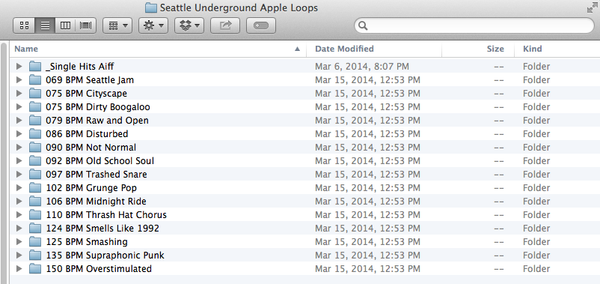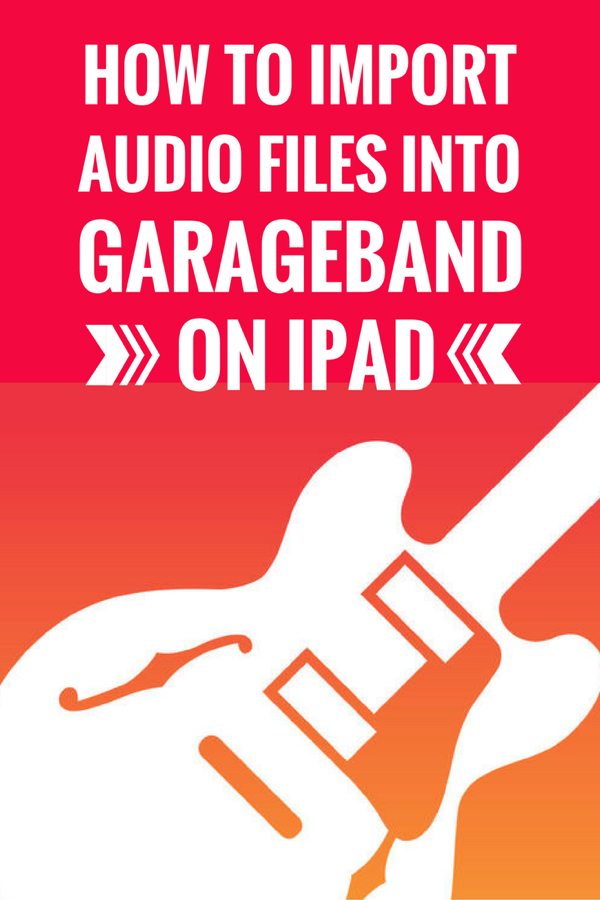GarageBand User Guide for iPad
- Add Wav File To Garageband Ipad To Computer
- Free Garageband Files
- How To Use Garageband Ipad
- Export Garageband To Wav
Add Wav File To Garageband Ipad To Computer
You can import audio and MIDI files from your computer and use them in your GarageBand song. You can add:
GarageBand doesn’t have an audio file manager either (like Logic Pro’s Bin) so to use the sound effect in other projects you will need to copy and paste it from one to the other. It’s probably worth creating a project just for keeping sound effects in for this very reason! With the help of iTunes, you can export GarageBand to iTunes and convert GarageBand AIFF to MP3, AAC, WAV using iTunes but you won’t able to convert GarageBand AIFF to FLAC, WMA, OGG, AU, AC3, MP2, AMR, etc with iTunes. To export GarageBand to MP3, WAV, FLAC, WMA, OGG, AU, AC3, MP2, ARM, it is better to hire a professional audio converter. GarageBand supported file types including MP3, WAV, AAC, CAF, and AIFF. So, TunesKit offers you to choose MP3, WAV or AAC as the output format. Right next to the 'Format' is the Output Path option. Click on to select a file destination for you converted songs. Step 3 Edit the Songs with the Built-in Audio Editor.

Audio files to an existing Audio Recorder or Amp track
MIDI files to an existing Keyboard or Drums track
Audio or MIDI files to new tracks
Audio or MIDI files to your song from iCloud Drive or your iPad using the Files app

When you import an audio file, it’s converted to a 44.1 kHz sample rate, 16-bit depth format if the original format is different. Imported audio files don’t follow tempo changes you make in GarageBand.
Free Garageband Files
When you import a multitrack MIDI file, GarageBand creates a new Keyboard track for each track in the MIDI file. The total number of resulting tracks cannot exceed 32 tracks. You cannot add multitrack MIDI files to cells in Live Loops.
Import audio and MIDI files from your computer
On your computer, add the audio or MIDI files you want to import to the GarageBand File Sharing area in the Finder.
In GarageBand on your iPad, set the current song section to Automatic to import the entire audio or MIDI file; otherwise, only the portion of the file that fits the current song section is imported.
After importing the audio or MIDI file, you can make the song section longer, then resize the region so more of it plays.
Tap the Tracks View button to open Tracks view, then tap the Loop Browser button in the control bar.
A message appears asking if you want to move the audio or MIDI files to the GarageBand File Transfer folder.
Tap Move Files.
The files are moved to the GarageBand File Transfer folder.
To preview an audio file, tap it in the list. You can control the preview volume with the slider at the bottom of the list.
Drag an audio or MIDI file from the list to Tracks view. Align the left edge of the file with the bar or beat (on the ruler) where you want it to start playing.
A new region created from the audio or MIDI file is trimmed to the end of the current song section, unless the current song section is set to Automatic. You can make the song section longer or slow down the tempo, then resize the region so that more of it plays.
Import audio and MIDI files with the Files app
Set the current song section to Automatic to import the entire audio or MIDI file; otherwise, only the portion of the file that fits the current song section is imported.
After importing the file, you can make the song section longer, then resize the region so that more of it plays.
Tap the Tracks View button to open Tracks view, tap the Loop Browser button in the control bar, then tap Files.
Tap “Browse items from the Files app,” then locate and tap an audio or MIDI file to import it.
To preview an audio file, tap it in the list. You can control the preview volume with the slider at the bottom of the list.
Drag an audio or MIDI file from the list to Tracks view. Align the left edge of the file with the bar or beat (on the ruler) where you want it to start playing.
A new region created from the audio or MIDI file is trimmed to the end of the current song section, unless the current song section is set to Automatic. You can make the song section longer or slow down the tempo, then resize the region so that more of it plays.
How To Use Garageband Ipad
Import audio and MIDI files using Slide Over
Export Garageband To Wav
Set the current song section to Automatic to import the entire audio or MIDI file; otherwise, only the portion of the file that fits the current song section is imported.
After importing the file, you can make the song section longer, then resize the region so that more of it plays.
Virtual dj skin resizer free download windows 10. For a start, the browser section assumes it's running at 1920x1080, which makes certain parts very small (e.g. Some text is still small, but it's a work in progress.Posted Fri 08 Aug 14 @ 10:21 am. PRO Infinity Member since 2007 Yes, but as I said at the start of this thread (and have said often in the forum) using skins designed for/at 1920 x 1080 doesn't always work well on smaller (and/or lower res) screens. Tabs on vertical dividers).
Swipe up twice from the bottom edge of the screen.
Also, it contains unlimited video effects and transitions for mixing videos. This application allows you to merge live performance and production with blazing fast speed.In this way, The Virtual DJ 2020 Crack Build 5630 keeps you productive all the time. Further, this application is compatible with all DJ controllers available in the market. Free virtual dj samples and effects download. It has a built-in sampler that contains unlimited drops and loops to spice up your mix.
The Dock appears.
In the Dock, touch and hold the Files app, drag it towards the upper-right corner of the screen, then let go.
A Slide Over window opens.
Locate the audio or MIDI file you want to import. If the file is in iCloud Drive, tap the Download button to download it before importing.
Touch and hold the file, then drag it from the Slide Over window to Tracks view. Align the left edge of the file with the bar or beat (on the ruler) where you want it to start playing.
A new region created from the audio or MIDI file is trimmed to the end of the current song section, unless the current song section is set to Automatic. You can make the song section longer or slow down the tempo, then resize the region so that more of it plays.